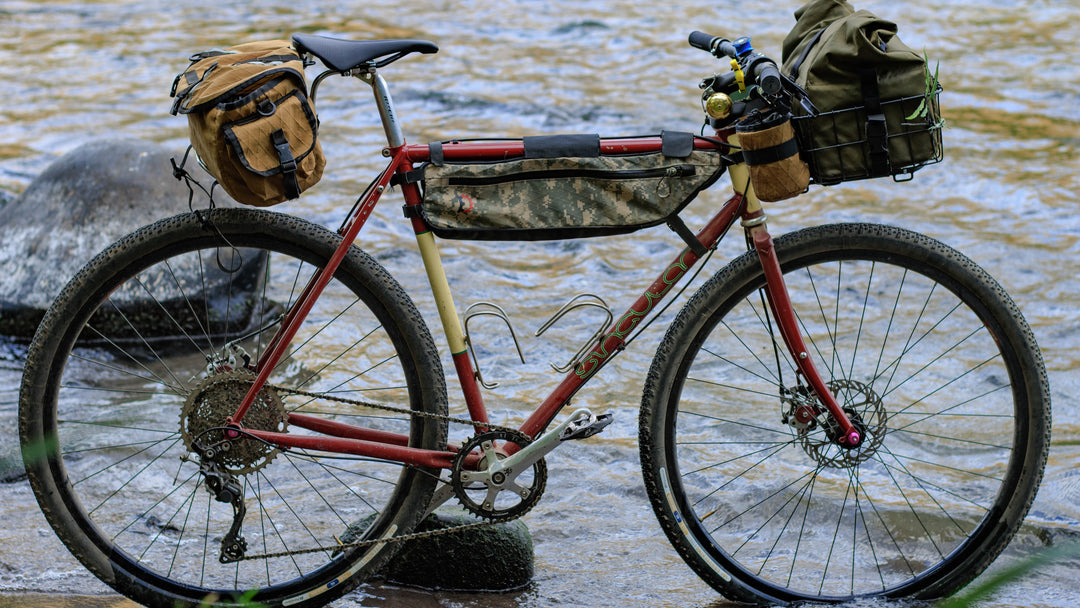A Quick Overview About Trekking Poles Design
There is so much written out there about trekking poles: what is best in aluminum vs carbon, cork or EVA handle, yes anti-shock or not, and so on. I don't want to write about all those as there is really enough about it, but I did want to put out a quick post about trekking pole design as it is something that comes up often. You can think of this as answering the question: what is the point of collapsible poles?
When we talk about pole design, we mean the locking mechanism, the number of sections and how they are collapsed (not how cool of a print/color they have). The reason this comes up so often is because Cnoc makes 5 section collapsible poles only, while there are other designs out there that combine 2-5 sections, internal or external locks and Z shape or straight poles (some don't even collapse at all!). So let's dive into each of those areas where I explain a bit of background and why we went with the choice we are offering.
Number of sections
When it comes to the number of sections a pole has, the decision is about where the pole will sit on a scale that has durability on one side and collapsed size on the other. A connection point between two sections is naturally a weak spot in the pole, increasing the chances of a break, bend or split. Naturally, that means that the hardest-working poles should be made from one section, as you find many ski poles are, while poles that are used sporadically often sacrifice some of that strength in order to be more compact.
The one section poles (called a staff by many backpackers) are used often as skiing poles or when there is a need for poles that will work very hard. They represent the modern alternative to picking up a solid branch on the trail and using it for stability and support.
For many years the three section pole has been the industry standard, allowing for the poles to fold to roughly 40% of the full length of the poles while still being length adjustable. The three section poles are still the most popular due to the balance between durability and compactness.
The five section design is pretty new to the market and is often called the tent pole design as the many sections can make them resemble a tent pole. These poles came from the need to have a more compact folded pole for easy stowing away, which is valuable for anyone who carries a lot of gear or needs flexibility. The development of more robust materials have resulted in pole designs that allow a five section pole to still be very durable.
At Cnoc Outdoors we chose to develop the five section pole design even more by changing the idea that the sections need to be of equal length - we have adjusted the design so each shaft has a different length; this increases the robustness of the Vertex poles as a walking pole but most especially when used as part of a shelter system (more lateral pressure). The idea here was to have a design that is even more compact than anything else available in the market, for easy stowing. The reason for that is simple: I often use the poles as a secondary system, not always for hiking, so the ability to stow them easily on the shoulder straps was particularly important.
Locking mechanism
Locking mechanism refers to the way you get the pole's sections to hold together for a strong and solid pole. There are two main types of mechanisms: internal lock and external lock. The internal locking system is a "twist lock" system, where a screw is connected to an expanding plastic bracket that locks one shaft inside the other.
External locking is based on a locking lever that creates a pressure sleeve on the internal shaft and locks it into place. Many time the external locking will be called "flick-lock" as the lever locks the shaft into place with a flick of the lever.
The internal lock was the most popular mechanism for a long time as it allowed the creation of an internal anti-shock that was built into the locking mechanism. The big problem with the internal locks is that they either tended to collapse as the poles were twisted during use or the internal lock would just seize due to dust or humidity, rendering the poles useless.
Not surprising then, that we choose to use the external lever locking mechanism: it is both more reliable and also allows for faster and easier deployment and collapsing. It is slightly heavier than internal locking, though.
Collapsing system
The collapsing system is many times determined by the preferred type of locking mechanism and the number of sections. However, the collapsing system itself is quite important, as it influences durability, dictates how thick the shafts can be and whether the pole is one continuous diameter. There two kinds of collapsing systems: telescopic and Z-style.
The telescopic system is the most popular in the market as it is based on a very simple system: several shafts in varying diameters fit into each other. This is a simple system and therefore tends to be the cheapest, but it also means that the shafts are not the same diameter, creating a potential weakness or unnecessary weight. The big benefit of a telescopic pole is the useable length: the collapsed length (usually around 25") to the fully deployed length of the pole (usually about 53") is pretty significant.

The name for Z-style poles come from the shape that the collapsed poles make: that of the letter Z. This collapsing system is only viable with 3, 4 and 5 section poles, with the 4th shaft (usually the handle) locking the other 3 shafts into place. The way it works is by using an internal cord to hold the tension of a fully deployed pole that is locked into place by the 3rd shaft extending from the top shaft/handle and locking into place (check the Vertex deployment video to see how this works).
Four-section Z-poles are fixed length poles (come in one size) while 5 section poles also have the ability to offer length adjustment somewhat (10"-15"). The big benefit of Z poles is that the whole length of the pole can be the same diameter, allowing for a more durable design. Another great benefit to Z poles is how quickly they can be deployed and collapsed.
The Vertex poles are 5 section Z-style poles as that allow for length versatility while facilitating very fast deployment and collapsing on the move. The length adjustment makes the poles more useable with various shelters, too.
Old vs New
When I started to make the Vertex poles, it was after years of using the internal lock, 3 section, anti-shock, telescopic poles. In some ways I chose to make the very opposite poles to what I was used to because it just made so much more sense to me - I needed the versatility and nimbleness that the 5 section Z style external poles offer. These poles are easier to use on the go, as a part of a shelter, compact when not in use, light and still as durable as the old-school poles many of us know so well.




















Leave a comment